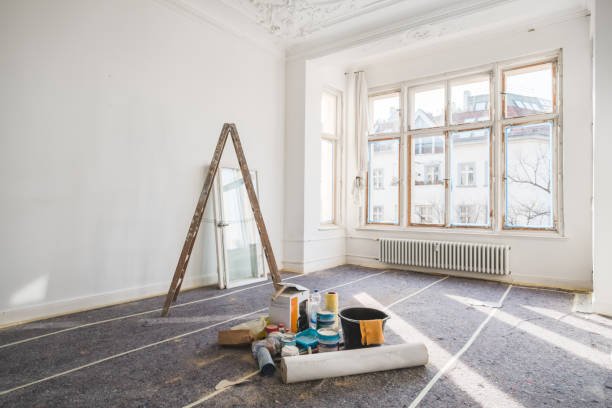How Do You Create Different Textures with Stucco Tools?
What Is Stucco?
Stucco is a plaster-like material made from cement, sand, lime, and water. It is applied to walls and ceilings to create a durable, weather-resistant surface that can be textured or left smooth. Stucco is commonly used on exterior walls, but it is also a popular choice for interior applications due to its aesthetic appeal.
Essential Tools for Creating Stucco Textures
To create different textures with stucco tool, you will need the right tools. Each tool serves a specific purpose and contributes to the final appearance of the surface. Below are the essential tools you’ll need:
Trowels
Trowels are flat, rectangular tools with a handle. They are used to apply and spread stucco onto the surface. Trowels come in various sizes, and the choice depends on the texture you want to achieve. For example:
- Flat Trowels: Ideal for smooth finishes and skip trowel textures.
- Notched Trowels: Used for comb or grooved textures.
Hawks
A hawk is a flat platform with a handle underneath, used to hold a small amount of stucco while you work. It allows you to apply stucco quickly and efficiently without having to return to the mixing bucket frequently.
Floats
Floats are used to smooth and refine the stucco surface after it has been applied. Different types of floats include:
- Rubber Floats: Ideal for creating sand or sponge textures.
- Wooden Floats: Commonly used for a rougher finish.
- Metal Floats: Suitable for smooth and polished finishes.
Brushes
Stucco brushes come in various shapes and sizes and are used to create stippled or dashed textures. They are particularly useful for adding decorative patterns to the surface.
Rollers
Textured rollers are cylindrical tools with patterns etched into their surface. They are rolled over the stucco to imprint specific designs, such as brick or stone textures.
Common Stucco Textures and How to Create Them
Here are some of the most popular stucco textures and how you can achieve them:
Smooth Finish
A smooth finish is a classic and elegant texture that requires precision and patience.
- How to Create It: Use a flat trowel to spread the stucco evenly over the surface. Smooth out any ridges or imperfections with a metal float. For an ultra-smooth finish, use fine sandpaper once the stucco is dry.
Sand Finish
Sand finish, also known as float finish, has a fine, sandy texture that adds subtle character to walls.
- How to Create It: Apply stucco with a trowel and then use a rubber float to lightly press and swirl the surface, creating a sandy texture.
Skip Trowel
Skip trowel is a decorative texture with a rustic, uneven appearance.
- How to Create It: Apply a thin layer of stucco with a trowel, then use a quick, skipping motion to create random patterns. Let some areas remain slightly raised for a natural look.
Lace Texture
Lace texture is a popular choice for both interiors and exteriors, featuring intricate patterns.
- How to Create It: Apply a base coat of stucco and let it partially dry. Then, use a trowel to apply a second coat in a lace-like pattern by dabbing and dragging the material.
Dash Texture
Dash texture is rough and rugged, often used on exterior walls for added durability.
- How to Create It: Use a stucco brush or dash machine to fling or spray the stucco onto the surface, creating a stippled effect. Adjust the size of the stipples by varying the amount of material.
Comb Texture
Comb texture features linear patterns that resemble combed lines.
- How to Create It: Use a notched trowel or a special comb tool to create parallel lines in the wet stucco. Change the direction of the lines for a more dynamic appearance.
Step-by-Step Guide to Applying Stucco Textures
- Prepare the Surface: Ensure the surface is clean, dry, and free of loose debris. Apply a bonding agent if needed.
- Mix the Stucco: Follow the manufacturer’s instructions to mix the stucco to the desired consistency.
- Apply the Base Coat: Use a trowel to apply the base coat evenly. Let it cure for the recommended time.
- Create the Texture:
- For smooth finishes, use a metal float to refine the surface.
- For textured finishes, use the appropriate tool (e.g., float, brush, roller) to achieve the desired effect.
- Let It Dry: Allow the stucco to dry completely. Drying times vary depending on the weather and thickness of the application.
- Seal the Surface: Apply a sealant to protect the stucco and enhance its durability.
Tips and Tricks for Perfect Textures
- Work in Small Sections: Stucco dries quickly, so work on small areas at a time to maintain control.
- Keep Tools Clean: Regularly clean your tools to prevent dried stucco from interfering with your work.
- Experiment: Practice on a test board before applying textures to a wall.
- Use Consistent Pressure: Maintain even pressure when using trowels or floats to ensure uniform textures.
Maintaining Stucco Textures Over Time
Stucco is durable, but it requires maintenance Digital business cards to stay in good condition:
- Regular Cleaning: Wash the surface with mild detergent and water to remove dirt and stains.
- Inspect for Cracks: Fill any cracks with stucco patching material to prevent further damage.
- Repaint or Reseal: Apply a fresh coat of paint or sealant every few years to protect the surface from moisture and UV rays.
Frequently Asked Questions
Can I create stucco textures on my own?
Yes, with the right tools and some practice, you can create stucco textures on your own. Start with simple textures and gradually work your way to more complex designs.
What is the best stucco texture for exteriors?
Dash and sand finishes are popular for exteriors because they are durable and weather-resistant.
How long does it take for stucco to dry?
Stucco typically takes 24-48 hours to dry, but full curing can take up to 28 days.
Conclusion
Creating different textures withco tools stuc is an art that combines skill, creativity, and the right techniques. Whether you prefer a smooth, polished look or a rustic, textured finish, there is a stucco texture to suit every style and preference. By understanding the tools and methods involved, you can transform any surface into a visually stunning masterpiece. So grab your trowel, mix up some stucco, and start experimenting with textures today! Certified Material Testing Products
Admin Notice :
If you are sure about your trip and overnight stay in Santa Rosa. You don’t have to worry about your food. If you are looking for a good food restaurant in Santa Rosa, olive Garden Menu Price will be the best option.







